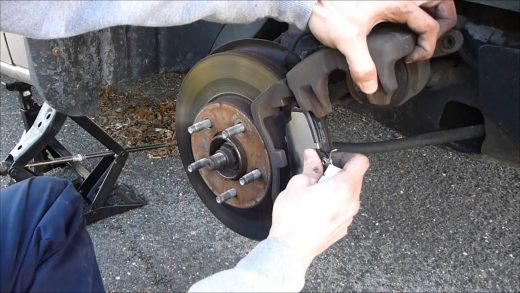The Ultimate Guide to Car Parts: Ensuring Your Vehicle’s Performance and Longevity
In the world of automobiles, understanding the myriad of parts that make up your car is crucial for maintaining its performance, longevity, and overall appeal. Whether you are a seasoned car enthusiast or a casual driver, having a comprehensive knowledge of car parts can make a significant difference in how you care for your vehicle.
Let’s explore the essential components of a car, tips on sourcing high-quality parts, and advice on maintaining your vehicle to ensure it runs smoothly for years to come.
Contents
Essential Car Components

Cars are intricate machines composed of numerous parts, each playing a pivotal role in ensuring the vehicle operates efficiently. These parts can be categorized into several key systems:
1. Engine Components
The engine is the heart of your vehicle, converting fuel into mechanical energy to propel the car forward. Key components of the engine include:
- Engine Block: The foundation of the engine, housing cylinders and other essential components.
- Pistons: Move up and down within the cylinders to create the power necessary for movement.
- Crankshaft: Converts the pistons’ up-and-down motion into rotational motion.
- Camshaft: Controls the opening and closing of the valves in sync with the crankshaft.
- Cylinder Head: Sits atop the engine block, containing the combustion chambers, valves, and spark plugs.
2. Transmission System
The transmission system transfers power from the engine to the wheels, allowing the car to move. It includes:
- Gearbox: Contains gears that change the speed and torque of the vehicle.
- Clutch: Connects and disconnects the engine from the transmission in manual vehicles.
- Drive Shaft: Transmits power from the gearbox to the differential.
- Differential: Distributes engine power to the wheels, allowing them to rotate at different speeds, especially during turns.
3. Suspension and Steering
These systems ensure handling and ride comfort:
- Shock Absorbers: Dampen the impact of road irregularities.
- Struts: Combine the shock absorber and a coil spring for a more compact design.
- Springs: Support the vehicle’s weight and absorb shocks.
- Control Arms: Connect the suspension to the frame.
- Steering Wheel and Column: Allow the driver to control the direction of the vehicle.
- Rack and Pinion: Convert the steering wheel’s rotational motion into the linear motion needed to turn the wheels.
4. Braking System
Safety is paramount, and the braking system ensures you can stop your car effectively. It includes:
- Brake Pads: Press against the rotors to create friction and slow the car.
- Rotors: Metal discs that the brake pads clamp onto to stop the wheels.
- Calipers: House the brake pads and apply pressure to them.
- Brake Fluid: Transfers the force from the brake pedal to the brake components.
5. Electrical System
Modern cars are packed with electrical components that control various functions:
- Battery: Provides the electrical power needed to start the engine and run electrical components.
- Alternator: Charges the battery and powers the electrical system when the engine is running.
- Starter Motor: Turns the engine over, starting the combustion process.
- Onboard Computers: Control various systems, including engine management, infotainment, and safety features.
Sourcing High-Quality Car Parts
Finding the right parts for cars is essential for maintaining their performance and longevity. Here are some tips on sourcing high-quality car parts:
1. Know Your Vehicle
Understanding the make, model, and year of your vehicle is crucial when searching for parts. This information ensures you get the correct parts that fit and function properly.
2. Choose Reputable Suppliers
Select suppliers with a proven track record of providing high-quality parts. Look for reviews and ratings from other customers to gauge their reliability and the quality of their products.
3. Consider OEM vs. Aftermarket Parts
Original Equipment Manufacturer (OEM) parts are made by the car’s manufacturer and are often more expensive. Aftermarket parts are made by other companies and can be a cost-effective alternative. Ensure that aftermarket parts meet or exceed OEM standards.
4. Check Warranties
High-quality parts often come with warranties that protect you in case of defects or failures. Always check the warranty terms before purchasing.
5. Consult a Professional
If you’re unsure about which parts to buy, consult a professional mechanic or car parts specialist. They can provide valuable advice and ensure you get the right parts for your vehicle.
Maintaining Your Car for Longevity

Regular maintenance is key to keeping your car in top condition. Here are some tips to help you maintain your vehicle:
1. Regular Inspections
Perform regular inspections of your car’s key systems, including the engine, transmission, brakes, suspension, and electrical system. Look for signs of wear and tear and address any issues promptly.
2. Follow the Manufacturer’s Maintenance Schedule
Adhere to the maintenance schedule provided by your car’s manufacturer. This schedule outlines when to perform essential services like oil changes, filter replacements, and fluid checks.
3. Use Quality Fluids and Filters
Using high-quality fluids and filters can significantly impact your car’s performance and longevity. Always use the recommended fluids for your vehicle and replace filters regularly.
4. Keep Your Car Clean
Regularly wash and wax your car to protect the paint and prevent rust. Clean the interior to maintain a comfortable and pleasant driving environment.
5. Drive Responsibly
Avoid aggressive driving, which can cause excessive wear and tear on your car’s components. Drive smoothly, adhere to speed limits, and avoid harsh braking and acceleration.
Conclusion
Understanding the parts that make up your car and knowing how to source and maintain them is crucial for ensuring your vehicle’s performance and longevity. By following the tips outlined in this guide, you can keep your car running smoothly and enjoy a safer and more reliable driving experience. Whether you’re a seasoned car enthusiast or a casual driver, taking care of your vehicle is an investment that pays off in the long run.

















